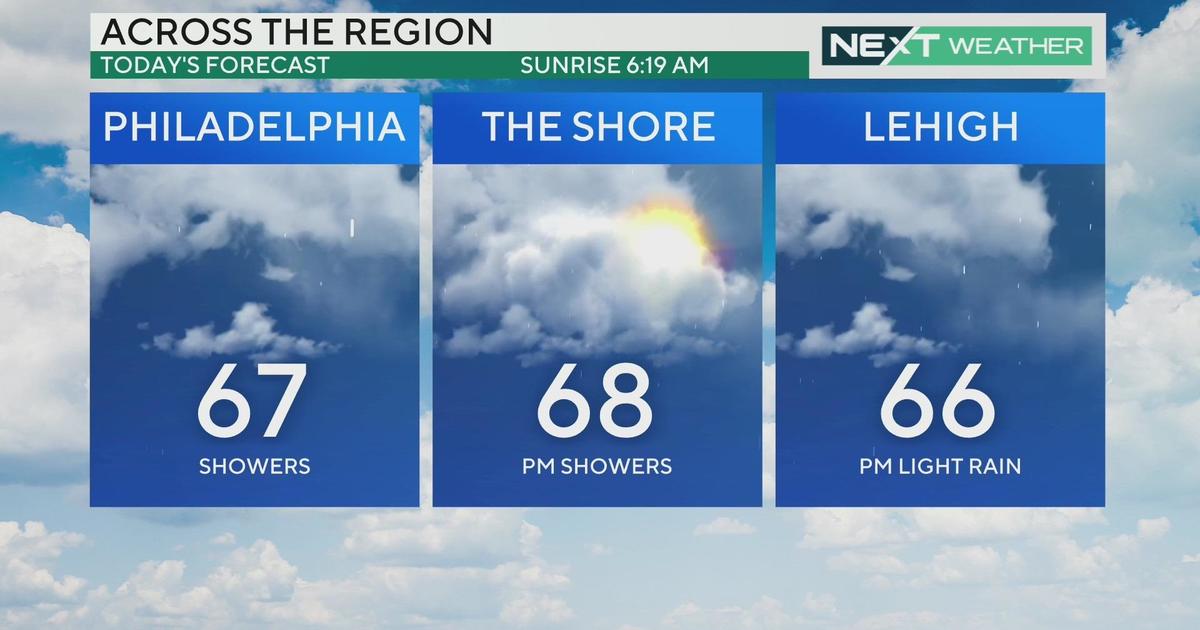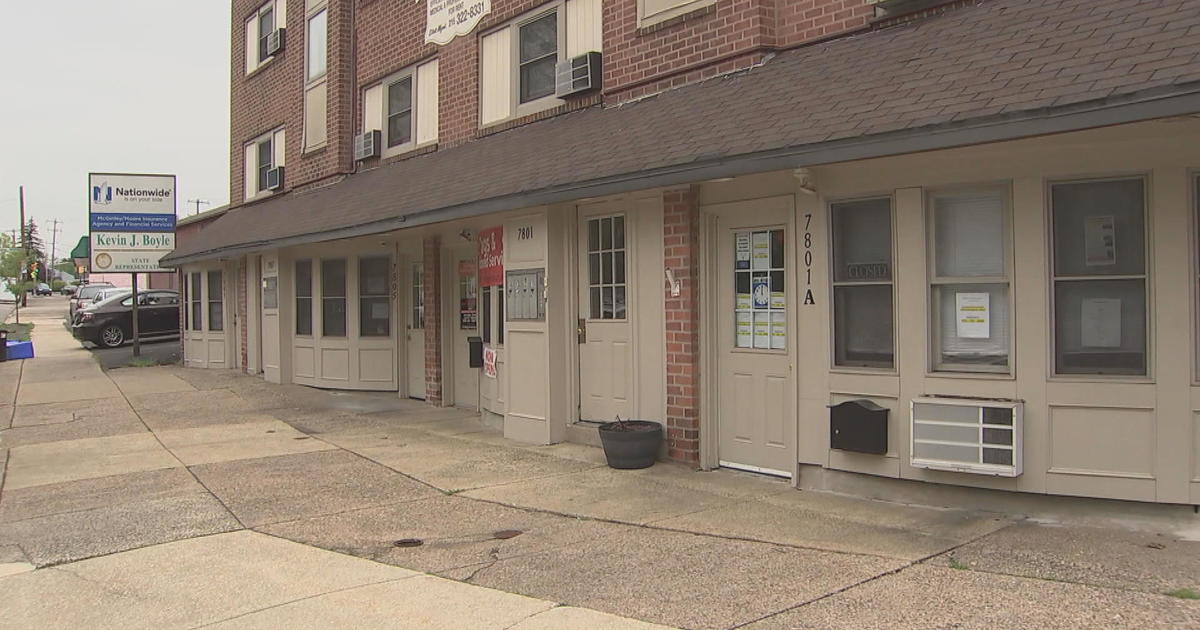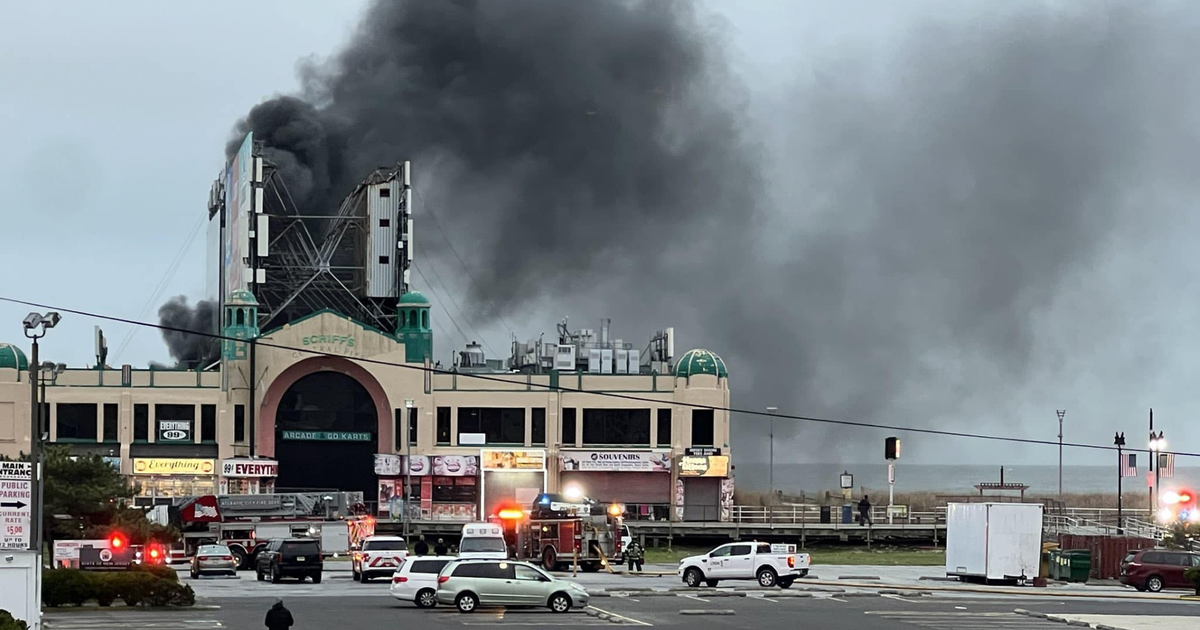AAA Offers Tips In Preparation For Thursday's Severe Weather
PHILADELPHIA (CBS) – As strong storms approach the Delaware Valley, AAA Mid-Atlantic is offering tips on how to prepare.
With the hazardous weather outlook issued by the National Weather Service, AAA wants to make sure motorists are prepared for the driving conditions they will soon face.
"Commuters are reminded that they will be faced with treacherous weather conditions throughout the day Thursday," said Jenny Robinson, Manager of Public and Government Affairs for AAA Mid-Atlantic, in a press release. "The most important steps to take when driving in wet weather are to buckle up, slow down, and keep a safe distance from the car in front of you. Also, remember it's the law in Pennsylvania to turn your headlights on if your windshield wipers are in use."
AAA recommends the following precautions for drivers:
- Slow down and increase following distances. Speed limits are set for ideal road conditions. When it rains, visibility is reduced and braking distances increase. On dry pavement, a safe following distance permits two to three seconds for stopping; that should be increased to eight seconds on slippery roads. Train your eyes farther down the road than normal, so you can anticipate changes and adjust your course gradually.
- Do not attempt to drive through standing water on the roads that look too deep. Try to avoid bridges and roads that are known to flood. Cross them only if there is little standing or streaming water. When driving on pothole-filled roads, hold the steering wheel firmly to avoid losing control. Just a few inches of water can turn your vehicle into a boat, and could put your life, and the lives of those around you, at great risk. Turn around; find another way to get to your destination.
- Watch out for hydroplaning. No car is immune from hydroplaning on wet surfaces, including four-wheel drive vehicles. Just because brakes work under normal conditions doesn't mean they will react the same on slippery roads where tires roll with far less traction.
- Alert drivers behind you that you're slowing with your brake lights. Without anti-lock brakes, squeeze the brakes until they are about to lock up and then release. With anti-lock brakes, use the same move - but don't pump the brakes, which would work against the operation of the ABS system. Slow down as you approach a pothole. However, do not brake when your vehicle is directly over a pothole.
- Use the central lanes. When driving during heavy rain, use center lanes of the road (without straddling the yellow line). Avoid outside lanes where the water collects at curbside.
- Use low-beam headlights to help other drivers see your car and increase visibility. Remember Pennsylvania law requires lights to be on whenever the windshield wipers are on.
- Use your defroster with your air conditioning to keep the air dry and prevent windows from fogging.
- Do not drive around barricades. Many lives have been lost when drivers disregard official orders and find themselves trapped in rising waters.
- Turn off the cruise control in wet weather driving. The use of cruise control on wet roads can cause hydroplaning.
- If conditions worsen to the point where there is any doubt about your safety, take the nearest exit. Don't just stop on the shoulder or under a bridge where you may feel less anxiety. If your visibility is compromised, other drivers may be struggling too.
- Fumes and oil leaks that build up on dry pavement rise to the surface of the road when it rains, making the road far slicker than it may seem.



